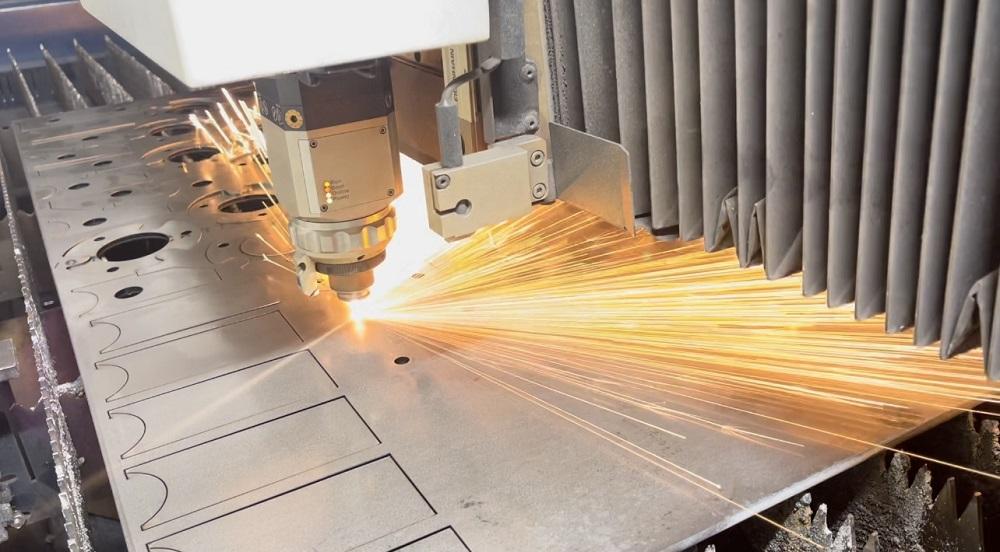In the world of metal cutting, understanding the concept of kerf is crucial. The kerf in metal cutting represents the width of the material that is removed by the cutting process. In other words, it is the gap or channel created when the metal is cut by tools or machines. Knowing the kerf is essential for achieving precision and efficiency in industrial manufacturing processes.
As industrial manufacturers continuously strive for excellence, minimizing material wastage and ensuring high levels of accuracy can significantly impact operational success. Let’s delve deeper into the world of kerf and its significance in metal cutting.

What Exactly Is Kerf?
In simplest terms, a kerf is the width of the material removed during a cutting operation. It is crucial in determining the precision of the final product. When metal is cut, the tool removes some material to create a slot or groove. This space is known as the kerf.
Types of Cutting Methods Influencing Kerf
Different cutting methods result in varying kerf widths. Some prominent methods include:
- Laser Cutting: Known for precise cuts, but the heat can lead to slightly wider kerfs.
- Plasma Cutting: Typically results in wider kerfs due to the nature of the cutting flame.
- Waterjet Cutting: Offers narrow kerfs, ideal for intricate designs.
- Manual Cutting: Depending on the tool, kerfs can vary widely in size.
Factors Affecting Kerf in Metal Cutting
Several factors can impact the width of the kerf:
- Material Type: Harder metals might result in narrower kerfs.
- Cutting Tool: The sharpness and shape of the tool can influence kerf.
- Tool Speed: Faster cutting might produce a more significant kerf.
- Thickness of Material: Thicker materials might have wider kerfs.
Why Is Understanding Kerf Important?
The importance of understanding kerf cannot be overstated, especially if you’re involved in industrial manufacturing:
- Precision and Accuracy: By knowing the kerf, manufacturers can better predict the dimensions of the finished product. This knowledge ensures that products fit together seamlessly and function as intended.
- Material Savings: Efficiently using materials helps reduce waste, saving costs and promoting sustainability.
- Improved Tool Lifespan: Understanding kerf helps in optimizing tool use, reducing wear and tear, and prolonging tool life.
Applications of Accurate Kerf Measurements
Accurate kerf measurements can optimize numerous applications across various industries. From aerospace to electronics, ensuring precision in metal cutting is vital for:
- Building complex CAD designs that demand tight tolerances.
- Producing intricate parts in precision metal cutting.
- Ensuring aluminum cutting is accurate for high-quality products.
Choosing the Right Cutting Method
Selecting the appropriate cutting method is vital for achieving the desired kerf and quality outcome. Considerations include the type of metal, the complexity of the cut, and budget constraints.
For an in-depth exploration of cutting techniques, you might find this external resource helpful.
Incorporating Safety in Kerf-Related Operations
While accuracy is crucial, safety cannot be neglected. Employing best practices in safety during metal cutting is essential. For further reading on safety protocols, you may check the safety tips for metal cutting.
Challenges and Solutions in Minimizing Kerf
Minimizing kerf is a challenge, especially with harder materials. Industry advances, however, have led to the development of more efficient tools and techniques.
Continuous innovation allows manufacturers to overcome these challenges effectively.

Conclusion: The Role of Kerf in Metal Cutting
Understanding the role of kerf in metal cutting is essential for industrial manufacturers. It ensures precision, minimizes waste, and extends tool life. By integrating the concept of kerf within their operations, companies can optimize production processes, leading to higher quality products and increased efficiency.
FAQs
What is the typical width of a kerf?
The width can range from 0.1mm to several millimeters, depending on the tool and material.
Can kerf affect the mechanical properties of the final product?
Yes, a wider kerf might lead to weaker joints or misalignments if not considered during design.
How can I reduce the kerf width in metal cutting?
Utilize sharper tools, slower speeds, and consider advanced techniques like waterjet cutting.
This article contains affiliate links. We may earn a commission at no extra cost to you.

